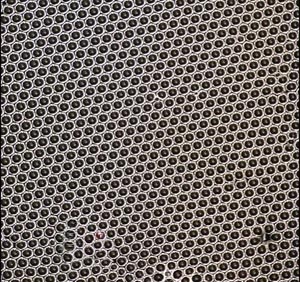Introduction
The concept of the dislocation was invented independently by Orowan, Taylor and Polanyi in 1934 as a way of explaining two key observations about the plastic deformation of crystalline material:
- The stress required to plastically deform a crystal is much less than the stress one calculates from considering a defect-free crystal structure
- Materials work-harden: when a material has been plastically deformed it subsequently requires a greater stress to deform further.
Not until 1947 was the existence of dislocations experimentally verified. It took another ten years before electron microscopy techniques were advanced enough to show dislocations moving through a material.
The first section of this package deals with dislocations in the simplest way - in two dimensions. Much of the early work on dislocations was done using simple models such as bubble rafts. These can be tremendously instructive, and we use video clips and still pictures to demonstrate how plastic deformation occurs via dislocation motion.
A bubble raft. (Click on image to view a larger version.)
In real crystals, dislocations are three-dimensional. The structure of a dislocation in 3D can be more difficult to visualise. We look briefly at these structures.
In the final part of this package, we consider some of the observations one can make that were first used to verify the presence of dislocations in real crystals.


